Orsa 115k/71m***
6 September 2003
Orsa (Orsha), Belarus
115km, 71 miles ***
(Riders note: It’s actually 145km from Baraysau to Orsha – we did 30 of those yesterday)
The Defeat of Napoleon!
Our hosts in Barysau, Alexandr2 and Olga, got up with Alexandr1 and Yuri to meet us at 7AM for some local touring. Last night (see yesterday’s update) they told us about the historic battles between the French and Russians in the area, and wanted to show us some of the battlefields. Expectations were far lower than appropriate.
10 minutes after Alexandr1 and Olga picked us up at our (dump) hotel, they stopped at the first site of the day. There’s a monument at the top of some stairs, and we posed for a photo. Below is a photo of Aleandr1, Olga, Yuri, the monument, Charlie and Alexandr2. You can’t see them, but there are two cannons in front of them. The monument has some words on (just Cyrillic to me) and a map. The map shows various battlefields in the area.
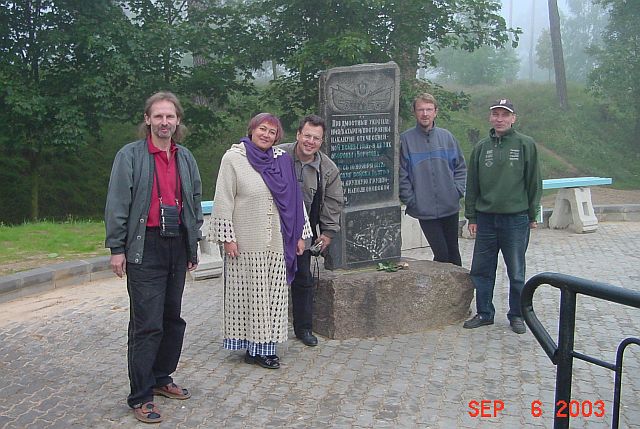
This site was a dirt fort – a miniature Brest fortress. The center area was about 100’x 100’, surrounded by dirt walls with some ramps leading up to the walls. Around these were another set of dirt walls. Here’s our group walking from the inner to the outer walls
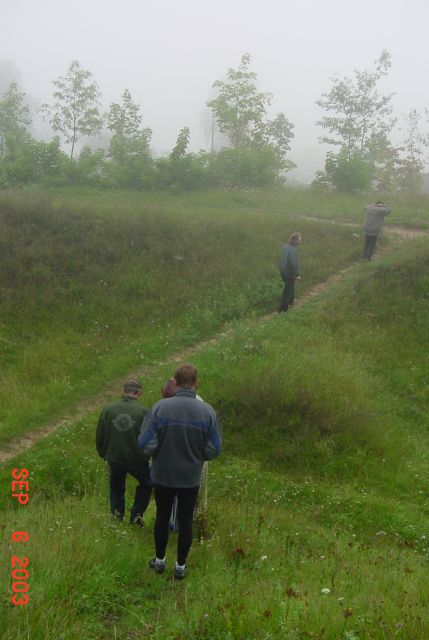
This dirt fort, hastily built by the Russians almost 200 years ago, was designed to stop Napoleon Bonaparte and his 40,000 strong retreating from Moscow army from crossing the only bridge within reasonable distance across the Brezina River. (all facts here come from our Russian hosts through translation and might merit verification). The amassed Russian troops and cannon caused Napoleon to seek another crossing – it’s not clear (to me) at this point if there was ever a battle at this fort.
It is clear that there was a big battle a dozen or so kilometers upstream. The narrative provided by our hosts says that the Russians pursued the “tail” of Napoleon while others stayed on the opposite side of the river to keep him from crossing. He (the Frenchman, accompanied on this campaign by Stendahl) and his troops tore down local homes to get wood to build a bridge, then crossed the Berezina and attacked. Some time later, 38,000 of the 40,000 Frenchmen were dead, as undoubtedly were a bunch of Russians. It was the functional end of Napoleon’s career – and the biggest thing that’s happened around here ever (except maybe Hitler’s exterminations – details to follow.).
More monuments were built. The next one is of the original monument, put up I don’t know when, but then torn down by the Stalinists for reasons I’m unclear on, and then re-erected on a new base in 1992 (180 years after the battle). I have the text (in Cyrillic) from the base if anyone wants to see it. (pardon the yet again cold, foggy, wet morning.)
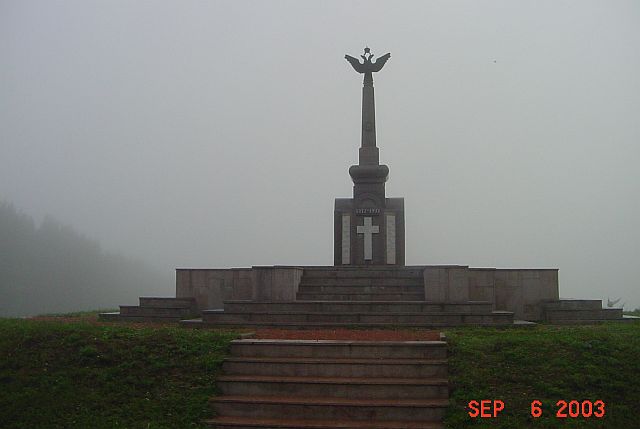
A hundred yards upstream (at the top of a long sloping hill) was the 1962 Kruschev era monument.
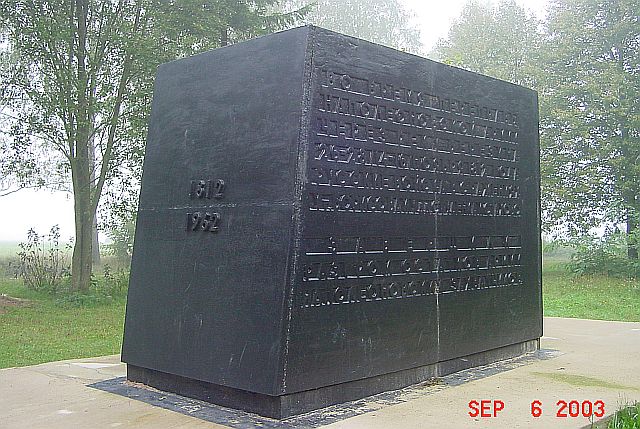
Another hundred yards upstream was the relatively new (1995?) French monument. A lot of people died here in an epochal battle, and this place isn’t even in the guidebooks.
The whole thing didn’t really strike home until we started walking down the hill toward the river. I asked about the many mounds scattered around…
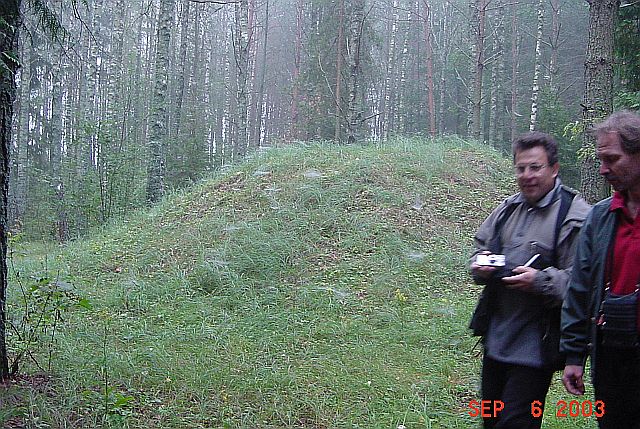
Alexandr1 told me they were the covered piles of dead French soldiers – covered to prevent disease of rotting bodies. (In his words, “piles of Napoleon’s bodies.”) Below are photos Yuri, Olga and Charlie walking down, and of the River that gave the battle its name.
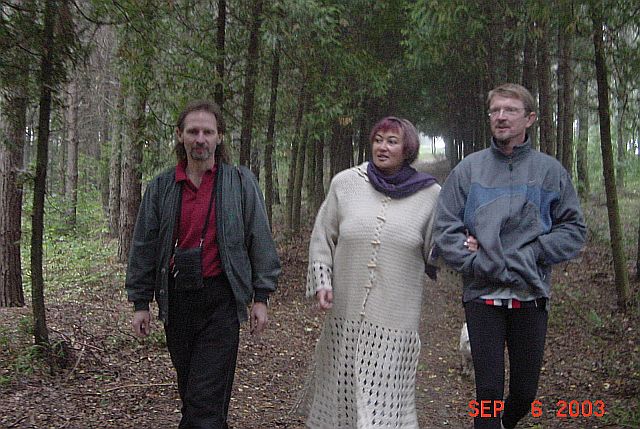
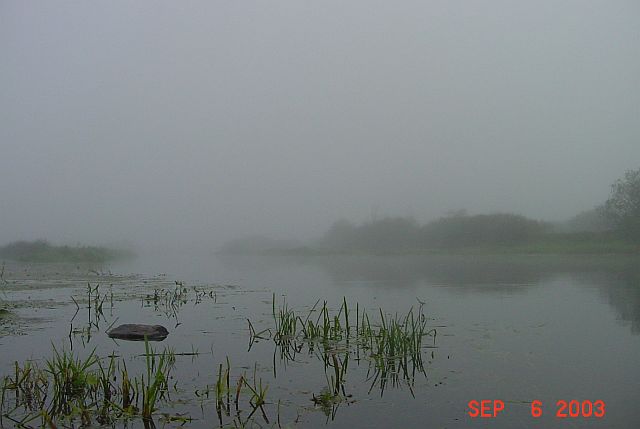
Before we leave this area, I should show you the two farmers with their cows across the way They were very enthusiastic about our presence and insisted (one of them) in joining some of us in a fog draped photo at the French monument.
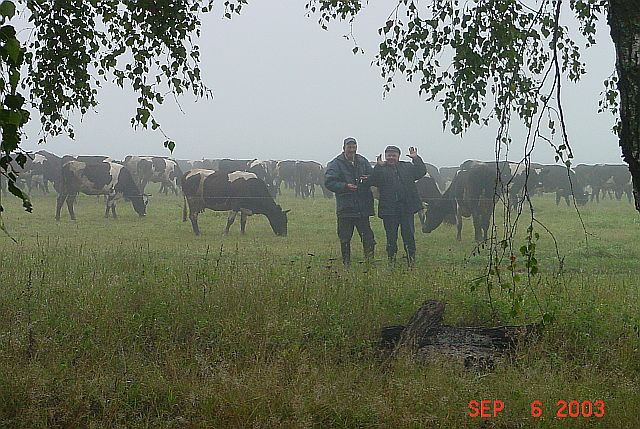
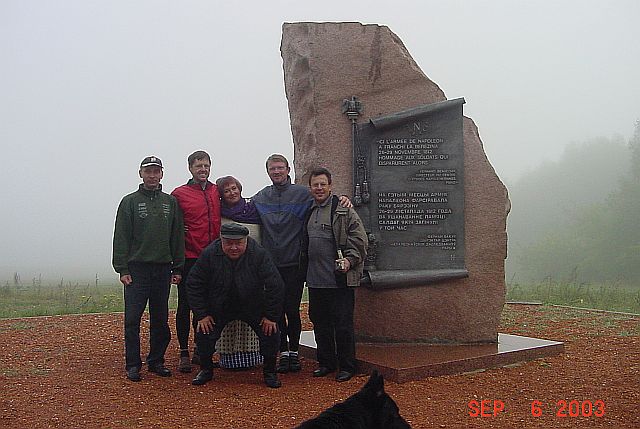
We got back in the van with Plato (Alexandr1 and Olga’s dog) and drove on.
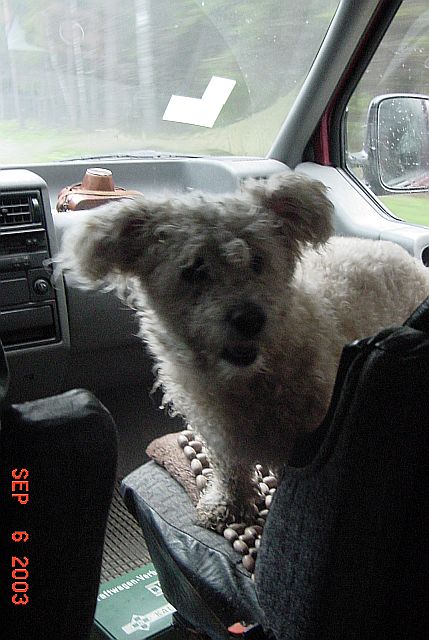
The 3rd and last sight we saw was the Swiss monument. Apparently a number of Swiss soldiers fought (and died) alongside Napoleon’s.
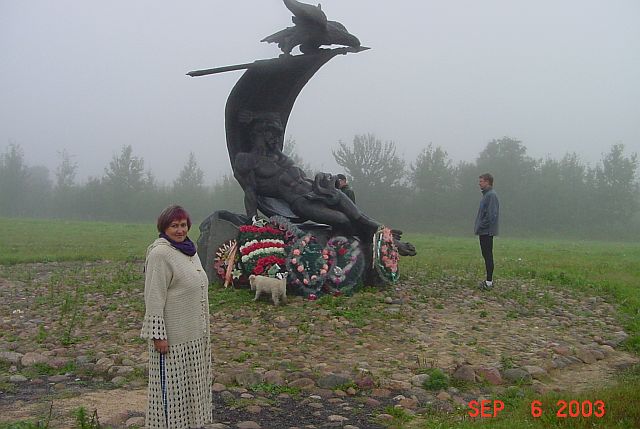
We then headed back to Alexandr1 and Olga’s home for a brief breakfast after which we drove to yesterday’s ending point. Here are Charlie and Yuri regrouping while Olga watches and Alexandr2 locks the van.
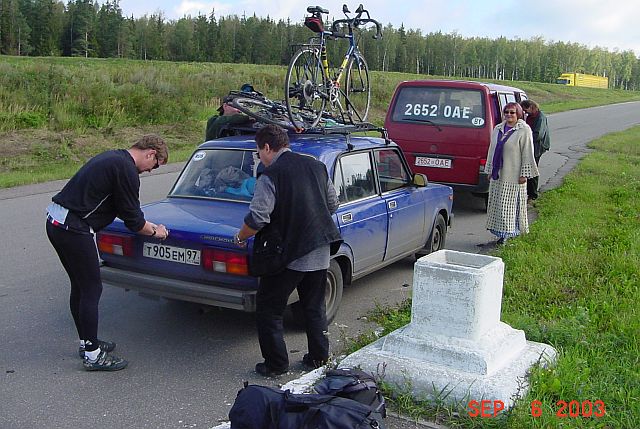
It was, they said, a Russian tradition for them to all stay with us until the starting point of our trip, so Alexandr2 and Olga drove 30km out of their way to say goodbye.
We got on our bikes at 11:15am and took off. The next two pictures are of the road – a beautiful smooth, wide 2-laner, and of a real well (as in authentic water hole) in a rual village (source of water when there’s no water mains and township plumbing). Note the typical rural home in the background.
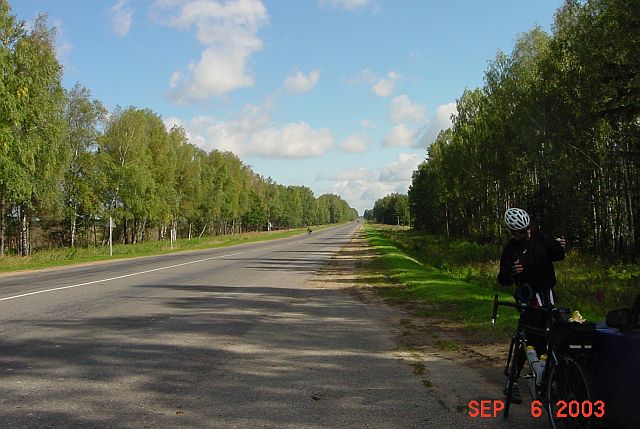
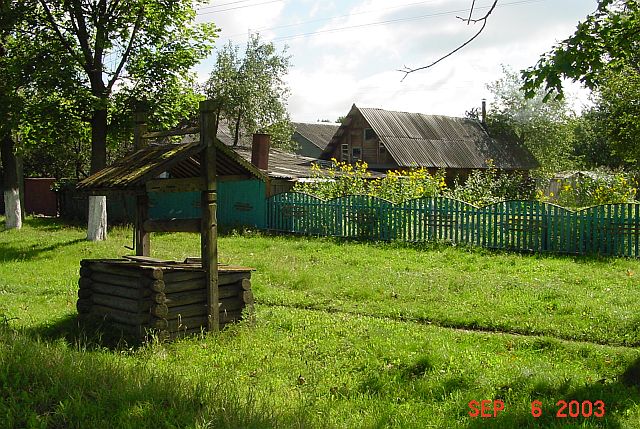
Just like the past few days, there just isn’t much to see riding through rural Belarus. So, the next photo is the sign introducing Orsa, followed by a view of the town from the bridge over the RR trax on the way in.
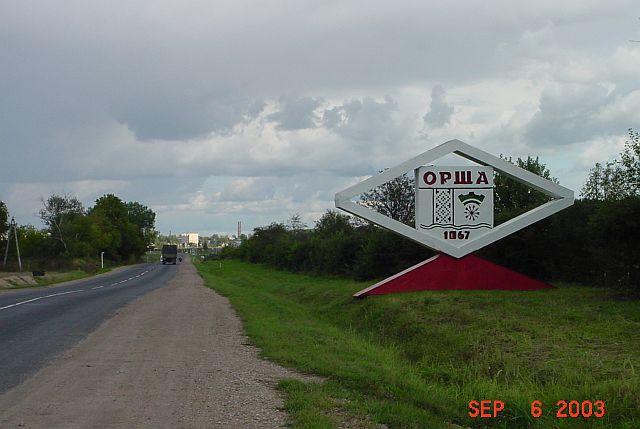
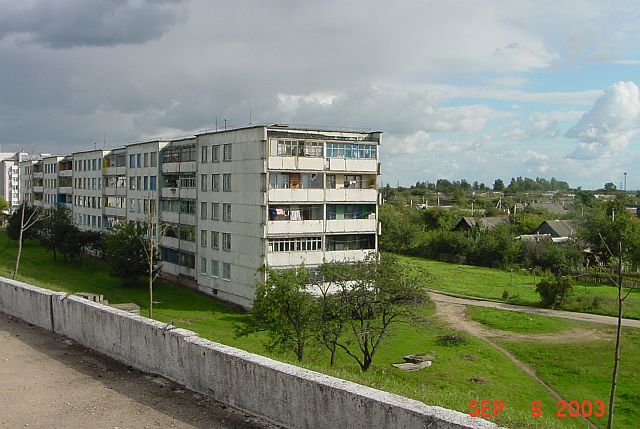
That’s a typical apartment building and those are typical urban single family homes. Alexandr says it’s better to live in the apartment buildings. A family gets one bedroom, one kitchen and one other room, but they have electricity and running water and many of the stand alone homes do not.
Of all the towns we are staying at in Belarus and Russia, I was most apprehensive about Orsa. A tourist who visited the town a couple years ago had this to say about it. “Today the rebuilt city straddles a junction of rusting rail lines and has a reputation as a gathering place for those disenfranchised by the collapse of the Soviet empire. Still dominated in spirit by its four Soviet-era prisons, Orsha is also known as a stopover for transients, as a warren for gangs of youths who do drugs and prey on those passing through, and as the home of merchants from the Russian Caucasus living desperate lives sans papiers, trading fruits and vegetables or engaging in crime. With its shacks and cinder-block hovels and smashed windows, Orsha has the look of a town where the mill has gone under and the people have given up. I ride the bus to the town center in the company of drunks and take a room in the one hotel.”
A few kilometers into town, we came to that selfsame hotel.
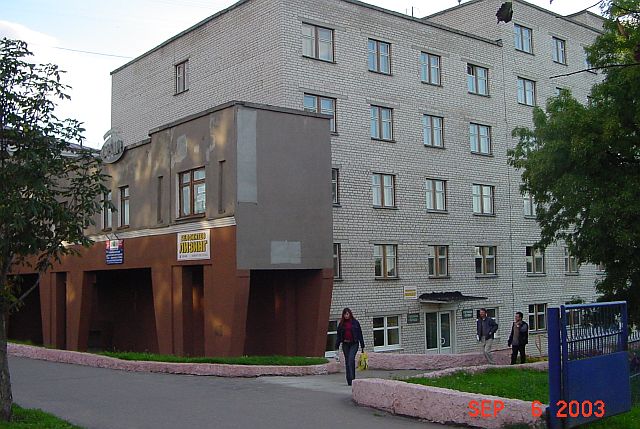
The picture does it too much justice. Here’s the view from my window.
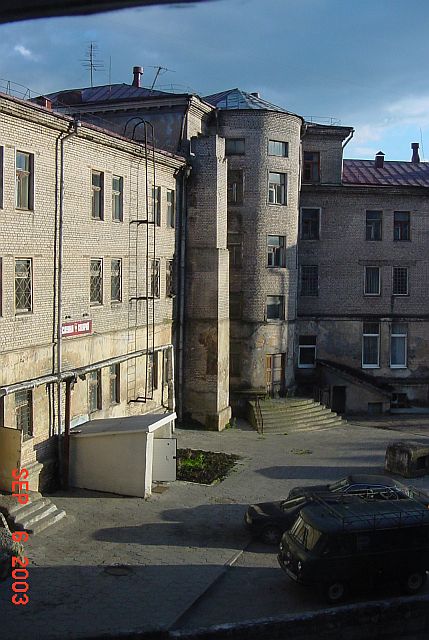
I’ll go into the details of our accommodations in a later update. We were anxious to get out of there and find some redeeming aspects of Orsa, so the four of us got in Yuri’s car for a driving tour. Every building in the city is run down, but the people clean up fairly well. Here’s a couple of the bigger homes on the main road.
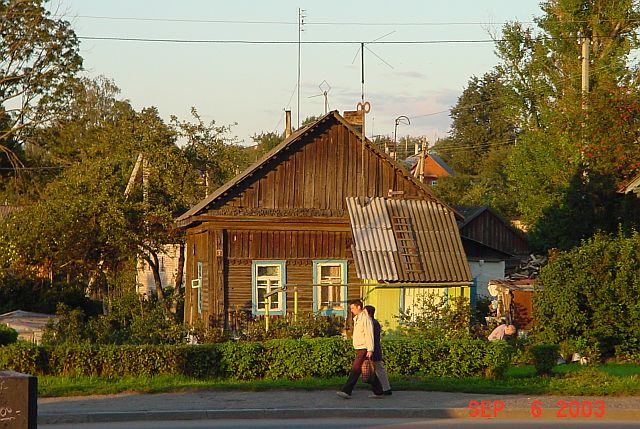
We didn’t see the prisons, but we saw a missile launcher.
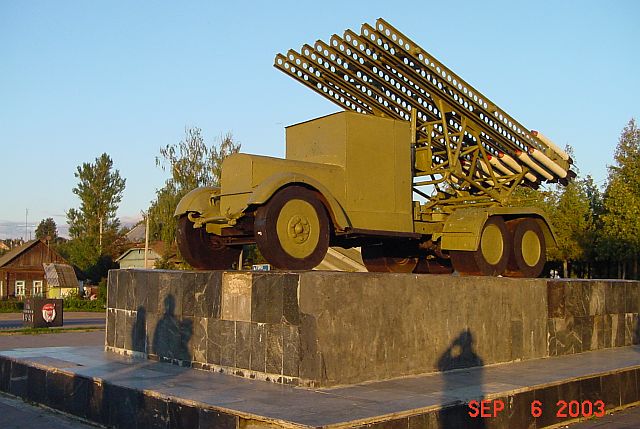
In some ways this truck seems real – in others, not. Alexandr explains that these were built in the Ukraine, but first used against the Nazis in a battle at Orsa. From this site on the banks of the Dnieper River, we saw a church in the distance and drove on dirt roads to it. It turned out to be a girls monestary. Here’s Charlie and Alexander in front of it.

Following our Orsa tour, Alexandr arranged dinner in the private room at Orsa’s only restaurant (in a city of over 150,000 people?!). Normally Charlie and I would prefer to eat with the locals just to see what’s up, but like every decent restaurant we’ve been in over the last week or so, this one doubles as a disco – with very, very loud Russian disco music. It’s weird to see people dressed up dining in such a place. You couldn’t hear yourself think, much less hold any kind of conversation. We high-tailed it back to our miserable hotel a block away, and the disco music serenaded us to sleep.

 September 5, 2003
September 5, 2003 